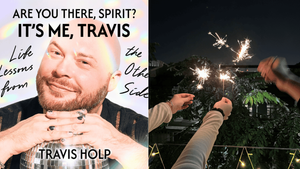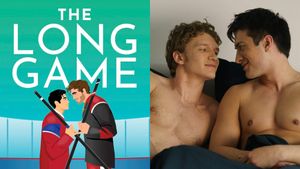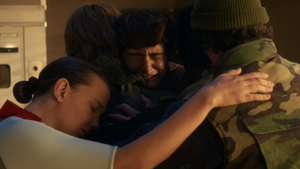Researchers have
been puzzled over why HIV-positive patients who have
periodic interruptions in their drug therapy reach a point
where the therapy no longer reduces their HIV viral
loads, even in the absence of any evidence of acquired
drug resistance. Now two researchers at
the University of California, Los Angeles's AIDS
Institute have devised a novel hypothesis based upon
mathematical modeling linked to the physical
phenomenon known as "resonance."
Based on the
assumption that viral dynamics have a cycle that varies from
patient to patient, the researchers suggest that these
forces interact with treatment interruptions in a way
that causes high fluctuations in the patient's
viral load and, ultimately, virologic failure. At that
point, the drugs can no longer reduce the levels of virus in
the patient's blood.
Therefore, the
UCLA researchers feel there may not be a single,
structured treatment-interruption therapy that will be
effective for all HIV patients.
"This is
important to keep in mind when developing therapies for
HIV-patients," Sally Blower, professor of
biomathematics and coauthor of the study with
postdoctoral researcher Romulus Breban, says in a press
statement, "Our research shows that mathematical
models can be extremely useful as tools for generating
hypotheses."
Resonance is the
oscillation that results when a system with natural
cycles is affected by an external force that is itself
moving at an appropriate frequency, resulting in a
strong fluctuation. A swing pushed in the same
direction in which it is already moving, for instance, will
swing higher as a result of that force placed upon it at a
frequency that corresponds to the natural periodicity
of the swing.
In the same way,
the periodic interruptions in HIV antiretroviral therapy
might contribute toward pushing the viral load higher when
those interruptions occur at a specific time during
the viral load's cycle, the researchers
suggest. Resonance is observed when the antiretroviral drugs
cannot reduce the viral load.
"Resonance
is a very general phenomenon that has been long known in
physics and engineering," Breban says in a press
statement. "We are the first to apply it to
virology."
"At the
beginning of treatment, the patient's viral load is
quickly suppressed," Breban continues.
"But the therapy interruptions combined with
the viral dynamics, which can vary widely from person to
person, can lead to treatment failure."
While small
initial pilot studies into treatment interruptions showed no
virologic failure in the test subjects, a large-scale
clinical trial in 2003 was prematurely terminated due
to a 53% virologic failure rate. And the disappointing
findings have continued, prompting authorities to
cancel another treatment-interruption study. On January 18,
the National Institute of Allergy and Infectious
Diseases halted enrollment into an international
HIV/AIDS trial known as Strategies for Management of
Anti-Retroviral Therapy, which compared continuous
antiretroviral therapy with episodic drug treatments,
after researchers determined that patients on episodic
treatment faced more than double the risk of disease
progression than the other patients.
If the resonance
hypothesis to treatment interruptions is correct, then
the results of the Blower-Breban study have important
implications for the treatment of patients, clinical
trial design, and public health.
The National
Institutes of Health/National Institute of Allergy and
Infectious Disease funded the study, which appears in the
April 15 issue of the medical journal The
Lancet. (The Advocate)




































































Charlie Kirk DID say stoning gay people was the 'perfect law' — and these other heinous quotes